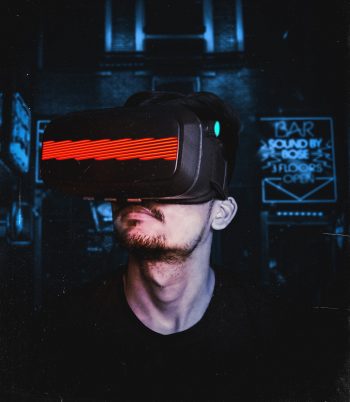
Some things just cannot be achieved or seen in the virtual world. People may use video conferencing apps but it is still no match to personal interactions where ideas and creativity can come unexpectedly from spontaneous conversation.
You can watch concerts online but it is still not as engaging or fun compared to real-life – watching the event along with other people as they scream their enjoyment. Quite simply, being physically present can bring different kinds of emotions, connections and even outcomes compared to the digital world, where a lot of nuance is lost.
However, we all know that going back to the way things were before the pandemic may still be a long journey as we face the current situation. People want to connect beyond cameras and virtual chatrooms, and this is just what Microsoft Mesh hopes to deliver.
Built on top of Azure, Mesh is the latest offering from Microsoft that plans to enable presence and shared experiences from anywhere – on any device – through mixed reality applications. It will let people connect to others wherever they are, either in the form of an avatar or a realistic figure of themselves.
This is possible with what Microsoft calls “holoportation”, a mix of hologram and teleportation. As the name suggests, people can teleport to other places using the Mesh service, appearing as a hologram in a shared mixed reality space.
With Mesh, users can also interact with a common object in front of them. This can include a car that lets experts dissect its parts or human anatomy that allows medical students to observe the internal systems of a body through holographic projections. Whether physically present or holoported, colleagues can collaborate on content in real-time.
For example, a team with members from different locations can conduct a meeting through Mesh, allowing them to see teammates that are augmented in the space and plan a project using virtual objects. Microsoft delivers this through a device called HoloLens, a wearable headset device that lets a user see in a mix of AR and VR environment.
Mesh is also compatible with all Windows mixed-reality headsets and the Oculus Quest and Quest 2. Although users cannot see a full rendering of others including their faces yet, Microsoft hopes to realise this in the near future.
In addition, Microsoft is aiming to implement Mesh beyond such special devices, allowing people to join Mesh-enabled meetings on any device, such as laptops, tablets or smartphones.
Mesh is part of the announcement during Microsoft’s online conference, Ignite. The technology was demonstrated in a video by Alex Kipman, Technical Fellow, Microsoft, during the event.
 (0)
(0) (0)
(0)Archive
- October 2024(44)
- September 2024(94)
- August 2024(100)
- July 2024(99)
- June 2024(126)
- May 2024(155)
- April 2024(123)
- March 2024(112)
- February 2024(109)
- January 2024(95)
- December 2023(56)
- November 2023(86)
- October 2023(97)
- September 2023(89)
- August 2023(101)
- July 2023(104)
- June 2023(113)
- May 2023(103)
- April 2023(93)
- March 2023(129)
- February 2023(77)
- January 2023(91)
- December 2022(90)
- November 2022(125)
- October 2022(117)
- September 2022(137)
- August 2022(119)
- July 2022(99)
- June 2022(128)
- May 2022(112)
- April 2022(108)
- March 2022(121)
- February 2022(93)
- January 2022(110)
- December 2021(92)
- November 2021(107)
- October 2021(101)
- September 2021(81)
- August 2021(74)
- July 2021(78)
- June 2021(92)
- May 2021(67)
- April 2021(79)
- March 2021(79)
- February 2021(58)
- January 2021(55)
- December 2020(56)
- November 2020(59)
- October 2020(78)
- September 2020(72)
- August 2020(64)
- July 2020(71)
- June 2020(74)
- May 2020(50)
- April 2020(71)
- March 2020(71)
- February 2020(58)
- January 2020(62)
- December 2019(57)
- November 2019(64)
- October 2019(25)
- September 2019(24)
- August 2019(14)
- July 2019(23)
- June 2019(54)
- May 2019(82)
- April 2019(76)
- March 2019(71)
- February 2019(67)
- January 2019(75)
- December 2018(44)
- November 2018(47)
- October 2018(74)
- September 2018(54)
- August 2018(61)
- July 2018(72)
- June 2018(62)
- May 2018(62)
- April 2018(73)
- March 2018(76)
- February 2018(8)
- January 2018(7)
- December 2017(6)
- November 2017(8)
- October 2017(3)
- September 2017(4)
- August 2017(4)
- July 2017(2)
- June 2017(5)
- May 2017(6)
- April 2017(11)
- March 2017(8)
- February 2017(16)
- January 2017(10)
- December 2016(12)
- November 2016(20)
- October 2016(7)
- September 2016(102)
- August 2016(168)
- July 2016(141)
- June 2016(149)
- May 2016(117)
- April 2016(59)
- March 2016(85)
- February 2016(153)
- December 2015(150)
